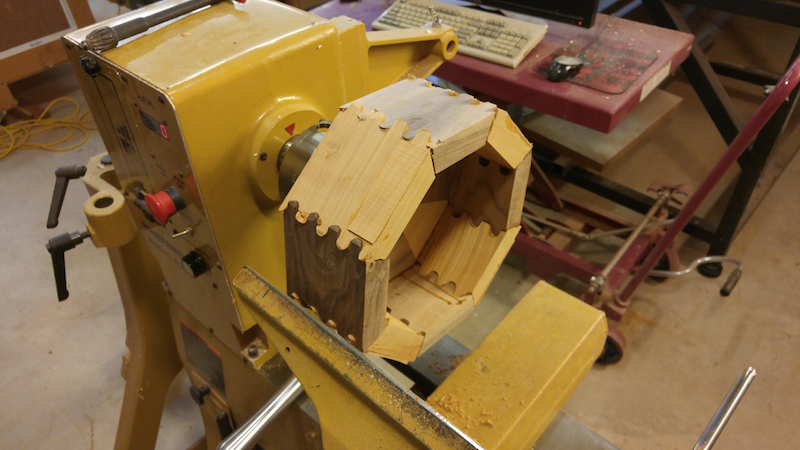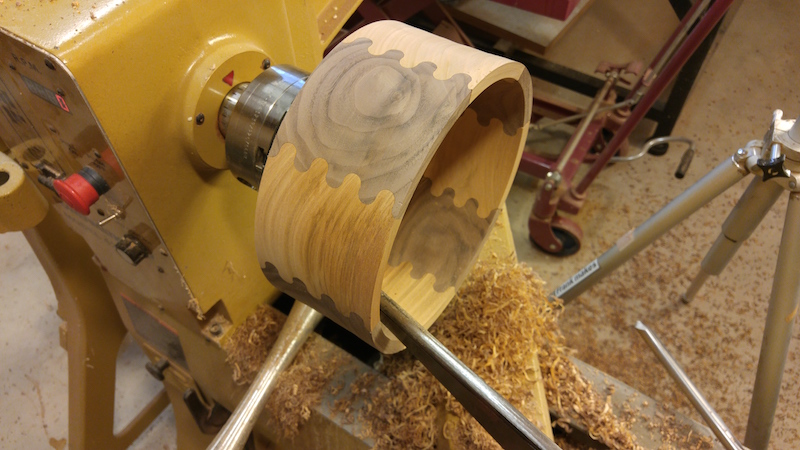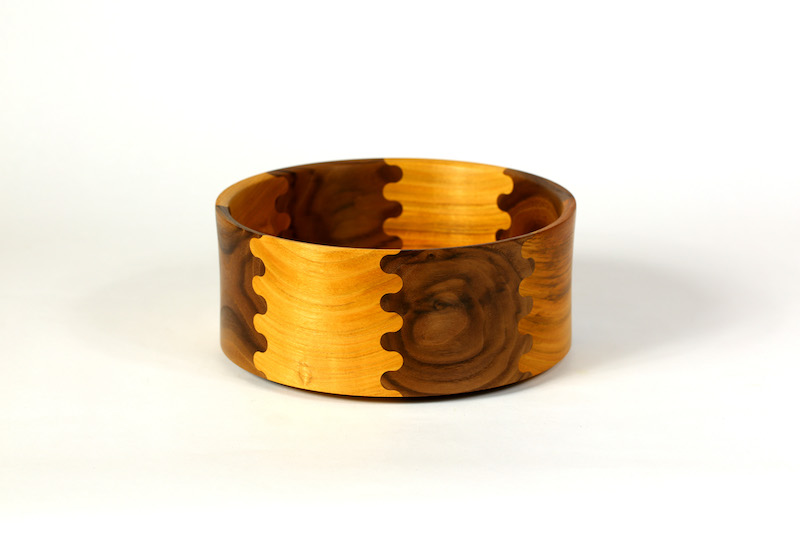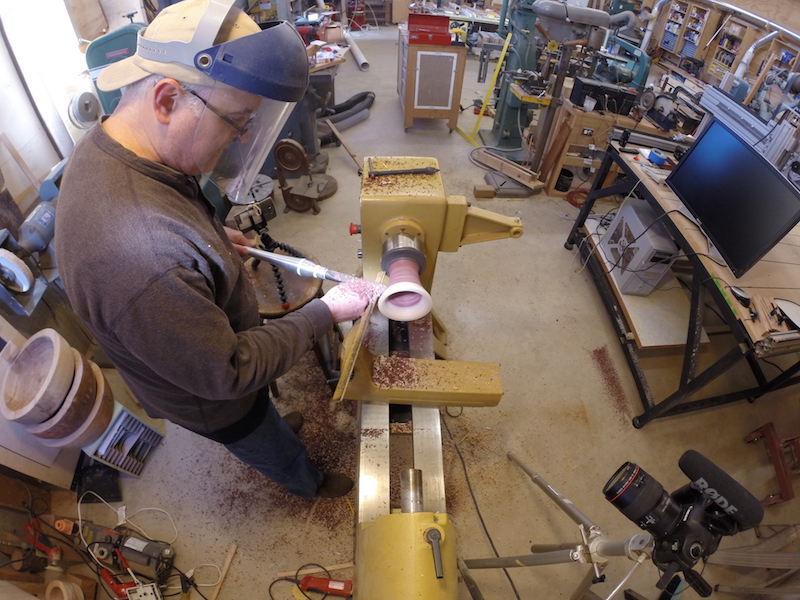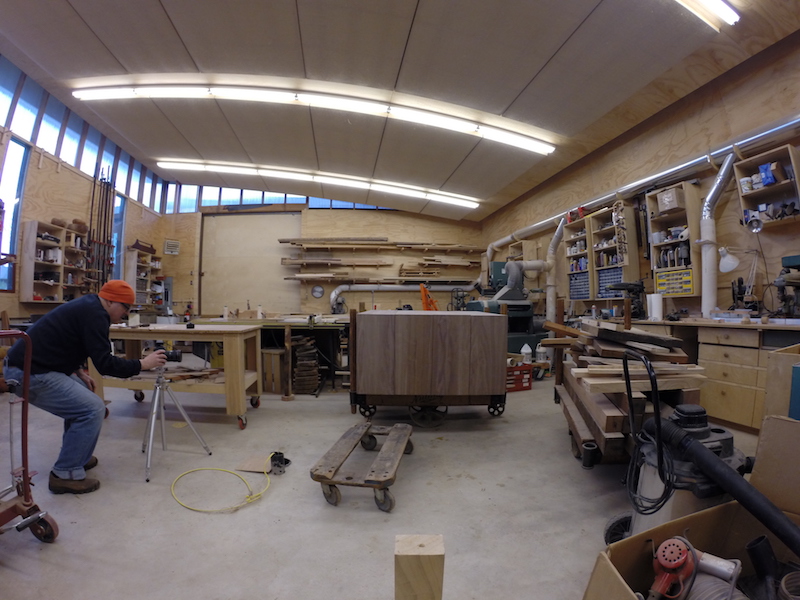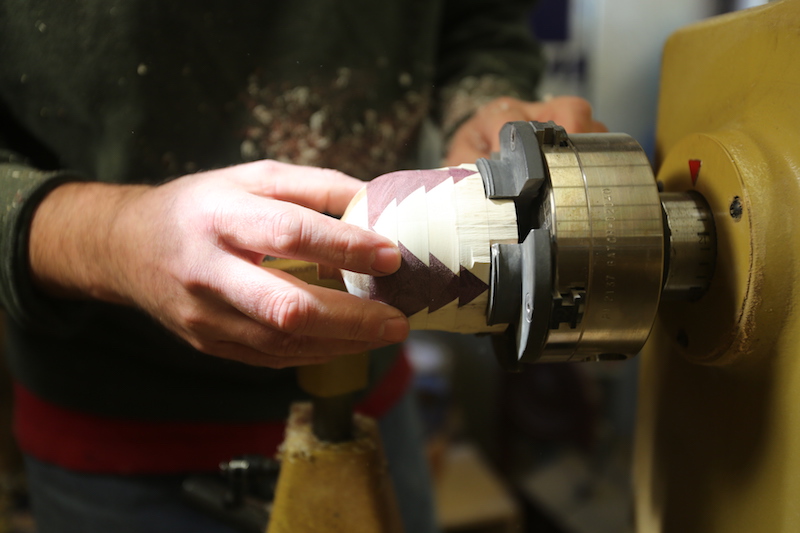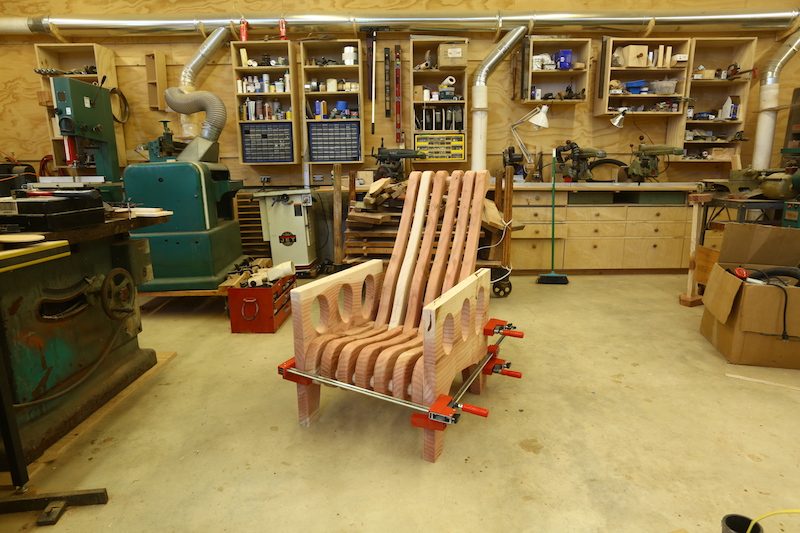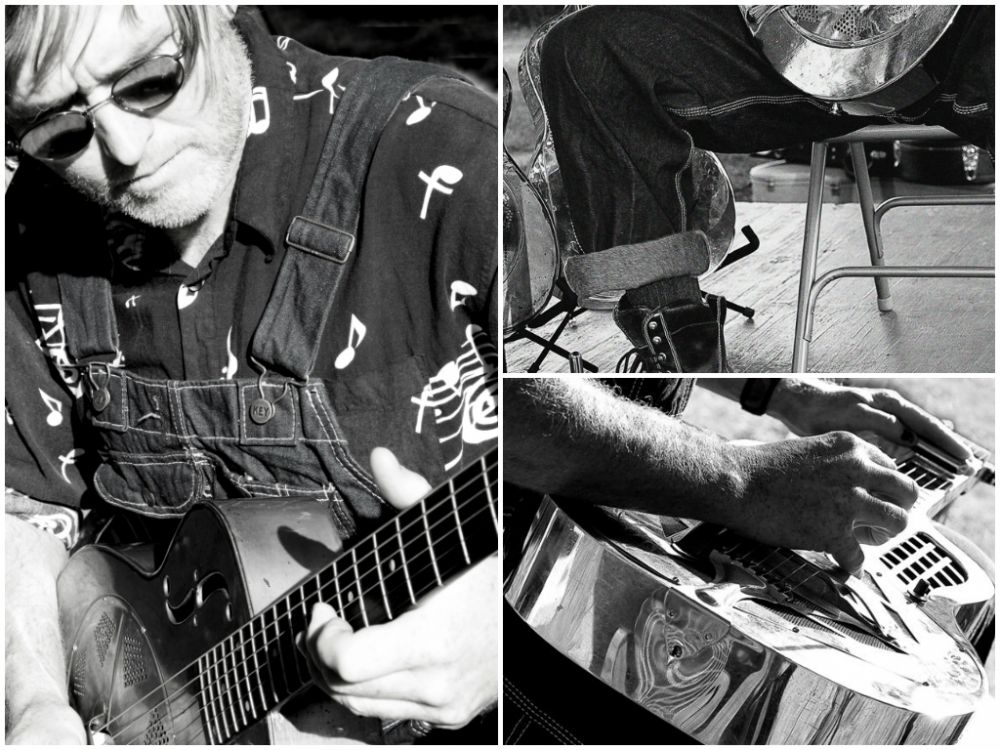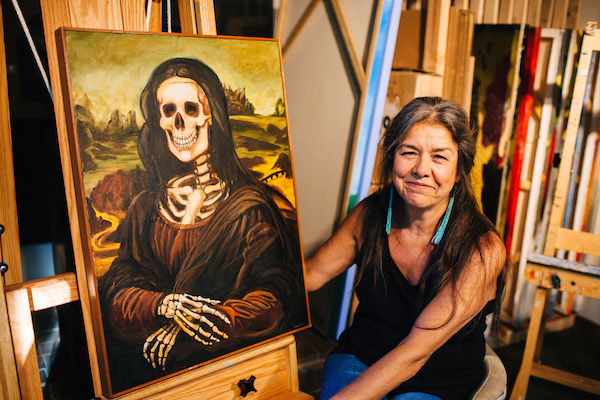In one of Frank Makes’ most popular YouTube videos, a lawn chair seemingly assembles itself. Large slabs of Sequoia march across the lawn and file into the shop. A skill saw rips a board, sans operator. Wood chips pile up on the floor next to the drill press. Near the end, the pieces of the chair leap into position, and the wood clamps, having done their job, clamber down from the newly assembled chair and scamper across the floor.
Both the film and the chair are the creations of Frank Howarth, a soft-spoken mad genius who lives in southwest Portland with his wife, Bonnie, and kids Claire and Calvin. His popular YouTube channel, Frank Makes, has nearly 500,000 subscribers.
Howarth’s fi
Howarth’s films are as well-designed as the things he makes, and the combination of low-key narration and masterful editing sets Frank Makes apart from the dozens of other YouTube woodworking channels. And although Howarth often tells viewers what he’s doing while he’s doing it, his films are not “how-to” videos.
“I want to make things that you couldn’t or wouldn’t make, but not present them in an arrogant way,” he said. He considers the videos stories, with the featured project a character.
Howarth tries to post a new video every week or two. About half of his time goes to the creation of the object, the rest to the production of the videos. The lawn chair video, which runs just under ten minutes, has an almost breathtaking momentum, but the stop motion animation required pausing every few seconds to take a photo and move objects, plus hours of editing and stitching together thousands of images. (Fans interested in the film making process can watch a very meta video on the making of the video of the making of the lawn chair.)
Other than a graduate class in stop motion film, Howarth has no formal film training. He grew up in Honolulu in a science-oriented family.
“Going to design school was my way of rebelling,” he said. Howarth attended Cornell University and earned a master’s degree in architecture from Harvard University, but in 2012 he left commercial architecture to pursue his hobby full time.
“A bunch of things came together around 2011 and 2012,” said Howarth, who recently turned 50. “I asked myself, ‘Why am I only doing this on Saturdays?’” Bonnie
“I’ve built this marketing platform,” he said. “I just need to fi
If Howarth’s projects are his characters, his shop is the stage. Howarth designed and built it on the site of an old swimming pool, taking advantage of the sunken grade to create high ceilings without compromising the views from the main house. It includes a shed roof and a row of clerestory windows—he thinks of the building as a toolbox with the lid slightly ajar. The video documenting the building of his shop has garnered more than 2 million views.
Newcomers to Frank Makes won’t find a reverent monk paying homage to anachronistic woodworking techniques. The shop is populated with Powermatic machines acquired from auctions and Craigslist postings, but he also has a
“When I got the CNC machine, some people thought, ‘that’s it,’” Howarth said. “But we were just getting started.” He built a custom hinged table that allows him to push the capabilities of the machine and make unconventional cuts; for instance, drilling the hole out of the Death Star so it could receive its iconic laser-focusing disc.
In a recent video, Howarth embarked on that most prosaic of woodworking projects, with a twist: a pizza cutting board that resembles an actual pizza. He used triangles of Yellowheart for the cheese, a ring of cherry for the crust, and coins of CNC-milled Padauk for the pepperoni. He also garnished the video with bits of humor, feeding the “pizza” into his planer with a long-handled pizza peel and shaving the wood with a cheese grater.
Next up in the queue, and proof you don’t need to be a woodworking geek to be a fan of Frank Makes—Howarth will fabricate a pair of Bigfoot sandals so he can make oversized footprints on the beach with his kids.



